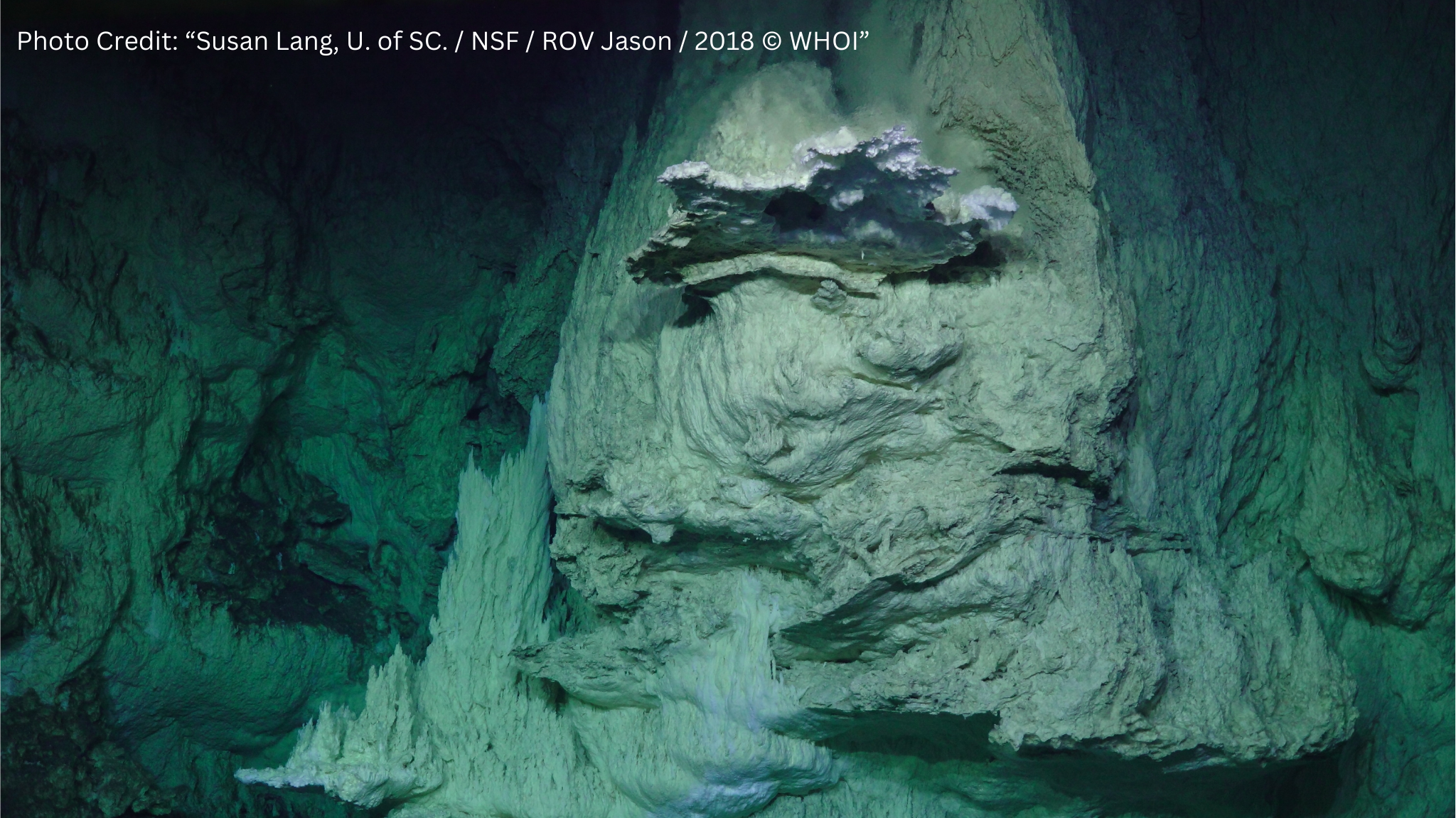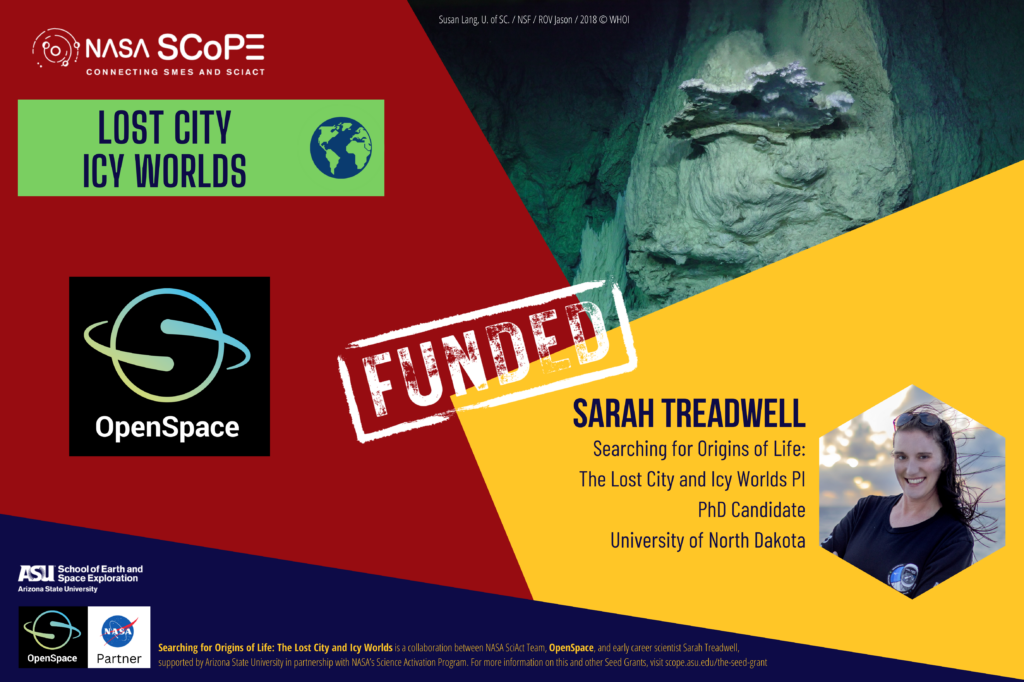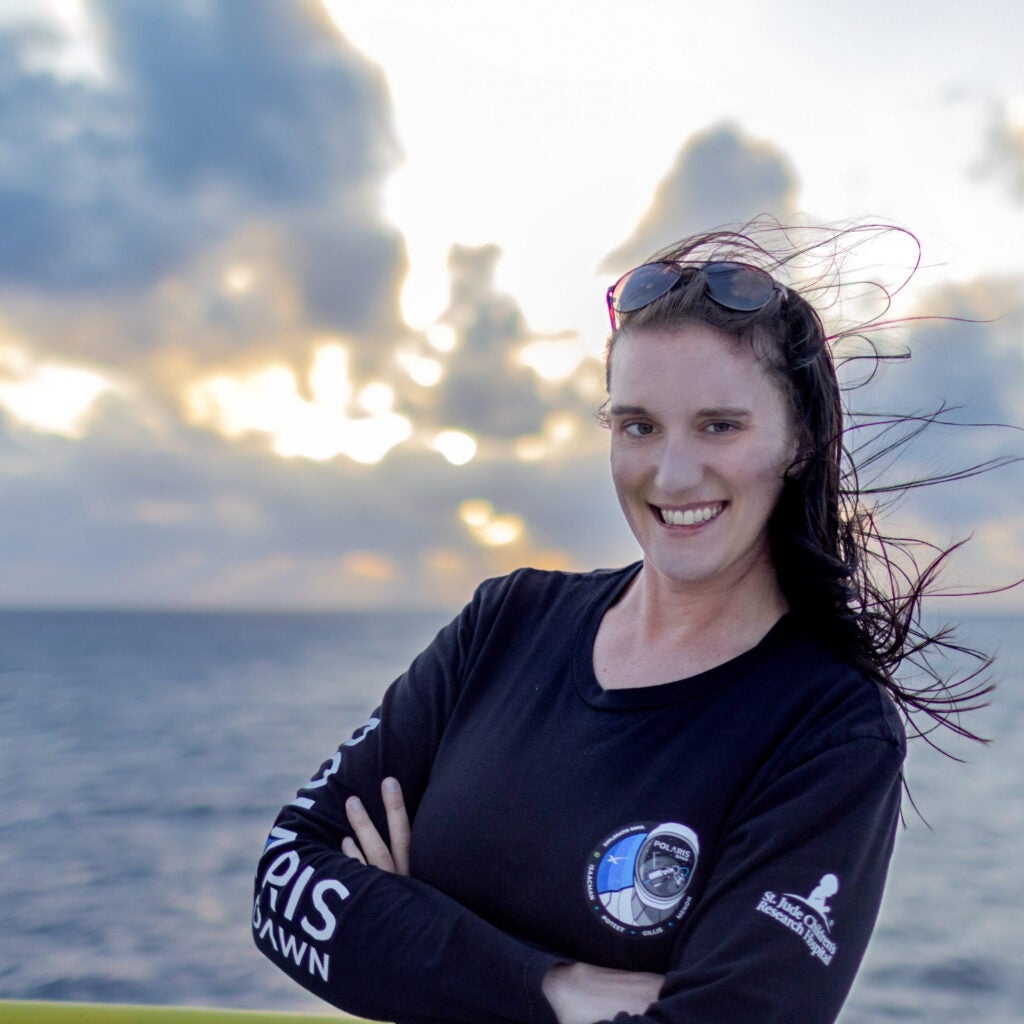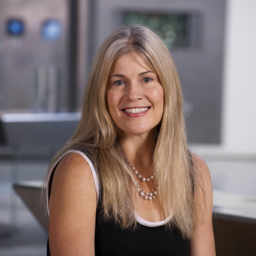
Sarah Treadwell
2023 Seed Grant Awardee
Project Description
Searching for Origins of Life: The Lost City and Icy Worlds

The Lost City Hydrothermal Field is a unique vent field located in the Atlantic Ocean along the Mid-Atlantic Ridge. This vent system is the only one discovered so far on Earth to have been created through a process called “serpentinization”, a chemical and geological interaction between Earth’s mantle and seawater. Hydrogen is produced here as a by-product of the reaction, which fuels the generation of compounds that are considered the precursors of DNA and could possibly give clues as to how life began on Earth.
Astrobiologists also believe that vent fields similar to the Lost City could be on Europa or Enceladus, icy moons of Jupiter and Saturn. This project, titled “Searching for Origins of Life” will partner with OpenSpace to design the Lost City vents into their software. It will also design some of the crucial research vessels that made discovering and researching it possible, such as the JOIDES Resolution. The project then will script a planetarium show to make the connection of the Lost City and of its importance in relation to astrobiology to be used in outreach efforts both at the American Museum of Natural History and to the community of Rockford, IL.
Target Audience Age
| 0-4 | 5-10 | 11-14 | 14-18 | 19-22 | 23-26 | 27-99 |
NASA Division

Astrobiology
Grant Status

Learning Context

Digital Learning

Neighborhood /
Community

Informal /
Out of School

Home / Family

Citizen Science

Formal Education
SME Bio

Historically, the [Earth and Space] sciences have stayed largely separated. I hope this project will showcase the importance of collaboration within the sciences for astrobiology, educate audiences on what astrobiology is, and spark more interest in the pursuit of answering really the great big questions: how did we get here and are we alone?
Sarah Treadwell
Searching for Origins of Life: The Lost City and Icy Worlds PI
Graduate Student
University of North Dakota
Sarah is a professional communicator of science, with a passion for astrobiology. She is a student at the University of North Dakota’s studying for her PhD in communications. She holds a Masters of Science in Communication and holds a Bachelors of the Arts in English and Writing.
In April 2023, she sailed onboard the JOIDES Resolution as an outreach officer for Expedition 399 to the Lost City Hydrothermal Fields on an origin of life research mission. The expedition also broke science records, reaching mantle rock and pulling up a staggering 1,267 meters of it.
She is the Principal Science Writer for Blue Marble Space Institute of Science and there also serves as the Senior Production Assistant for “Ask an Astrobiologist”, a monthly show presented by NASA Astrobiology department. Sarah also volunteers as a Solar System Ambassador for NASA/JPL and conducts outreach to the public on current and upcoming missions through frequent presentations and sidewalk astronomy.
SciAct Team

OpenSpace Description
Funded in part by NASA, OpenSpace brings the latest techniques from data visualization research to the general public. OpenSpace supports interactive presentation of dynamic data from observations, simulations, and space mission planning and operations. OpenSpace works on multiple operating systems, with an extensible architecture powering high resolution tiled displays and planetarium domes, and makes use of the latest graphic card technologies for rapid data throughput. In addition, OpenSpace enables simultaneous connections across the globe, creating opportunity for shared experiences among audiences worldwide.

This project supports our SciAct project by allowing us to partner with a SME to bring data into OpenSpace for an environment (submarine) that we have not yet been able to visualize beyond sea floor topography. It extends OpenSpace capability for engaging audiences with programming about searching for life beyond Earth.